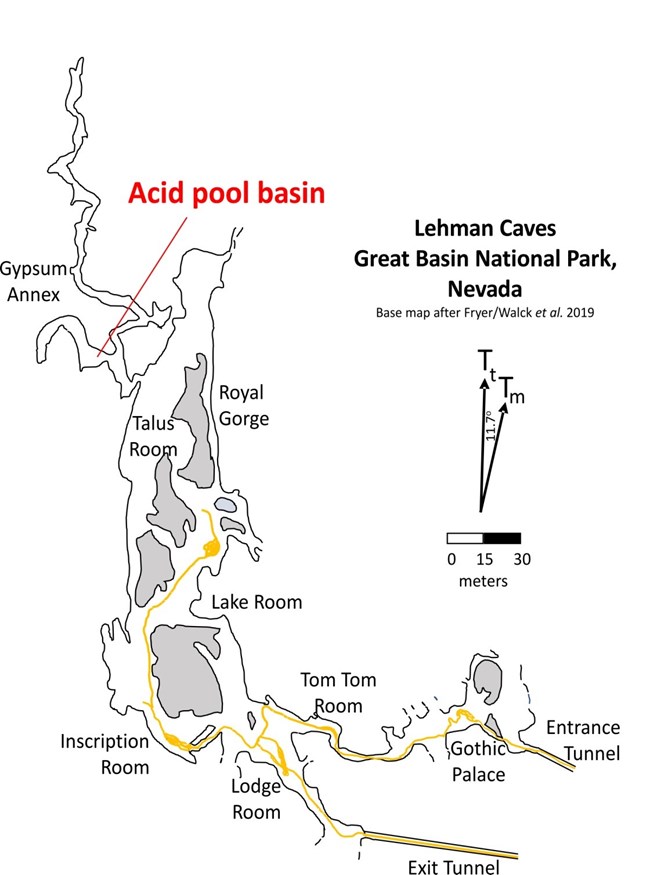Part of a series of articles titled The Midden - Great Basin National Park: Vol. 20, No. 1, Summer 2020.
Article
Evidence of a Sulfuric Acid Origin for Lehman Caves
This article was originally published in The Midden – Great Basin National Park: Vol. 20, No. 1, Summer 2020.

Lehman Caves is one of the key attractions in Great Basin National Park. In 1885 Absalom Lehman rediscovered the cave and made it into a show cave. Since at least 1960, the cave has been the subject of geologic investigation. Our knowledge of how caves are formed has come a long way since 1960, and we now know that there are multiple ways that caves can develop. The most common caves are epigenic, which means that they form near the surface of the earth as a result of limestone dissolution by carbonic acid. These caves are part of regional drainage systems. A great example is Mammoth Cave in Kentucky, and there are many thousands of similar caves in karst regions throughout the world. More than a dozen caves in Great Basin National Park are epigenic.
In the 1970s, researchers in Carlsbad Caverns National Park realized that caves of the Guadalupe Mountains did not fit the epigenic model that had been established for Mammoth Cave. They discovered that most caves in the Guadalupe Mountains were formed by processes that took place inside the earth and were not connected to surface drainage systems.

Dave Bunnell
This is an excerpt from a longer article. To read more, please visit this Park webpage
Last updated: February 8, 2024
